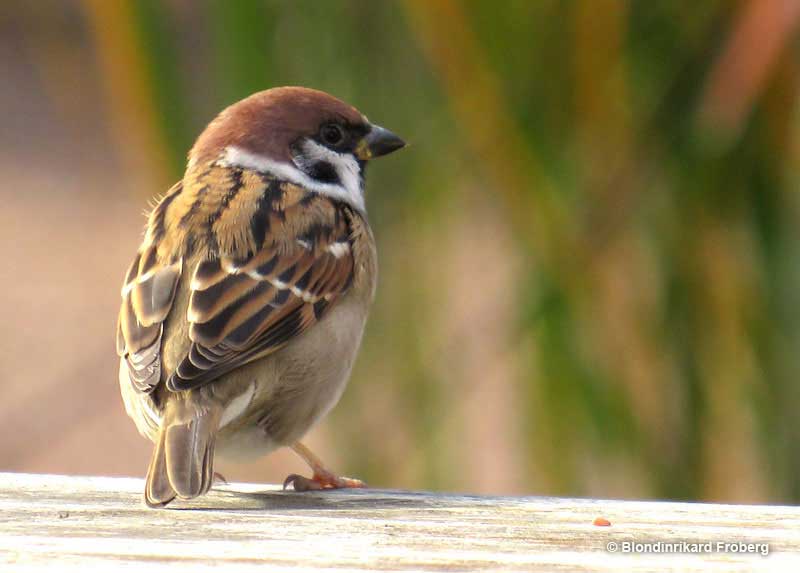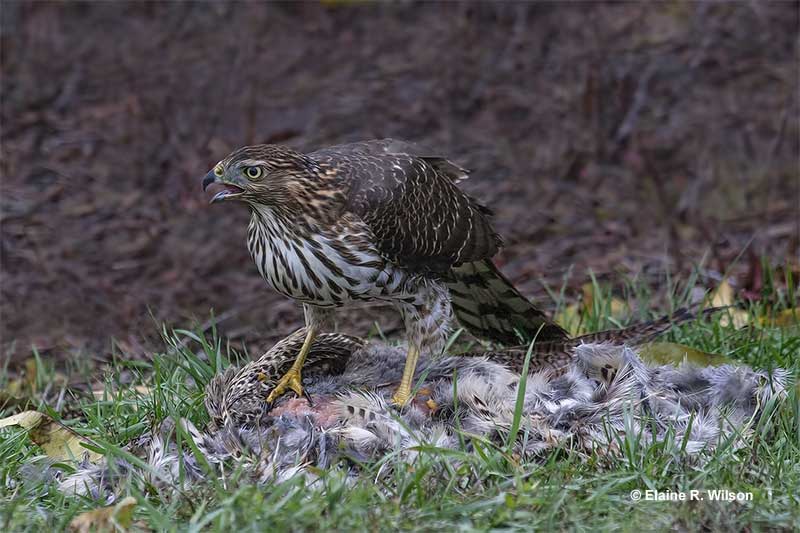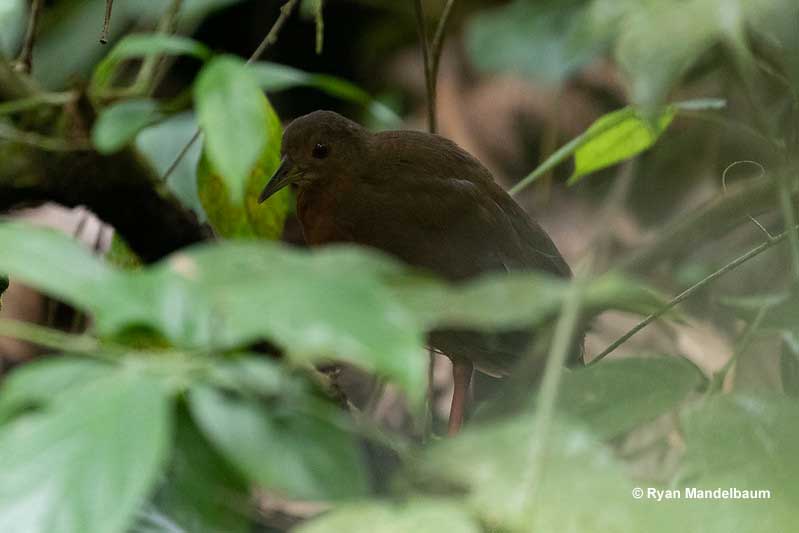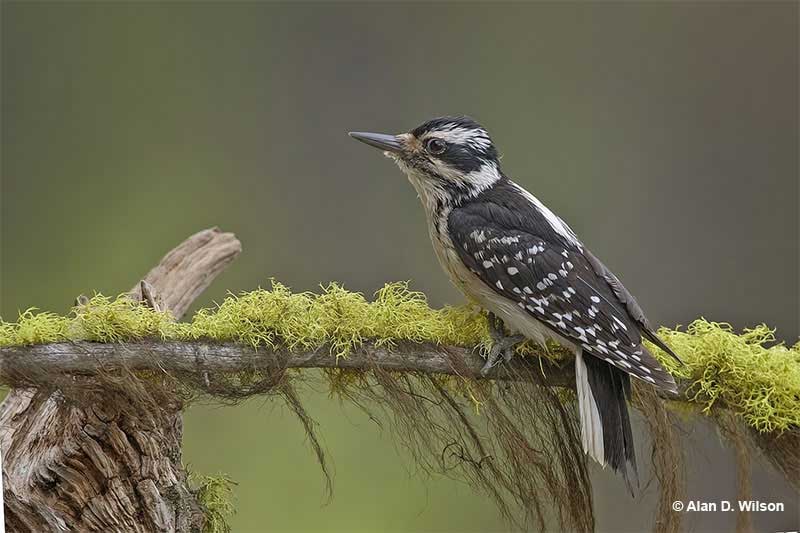Bird names starting with the letter E may not initially evoke excitement and curiosity when it comes to finding out the reason behind the name. Terms like “Eastern” or “Eurasian” often just refer to the bird’s range.
However, there is still a wealth of fascinating details to uncover from the birds’ behavior to their other names and history behind them. Let’s explore!
Eared Grebe
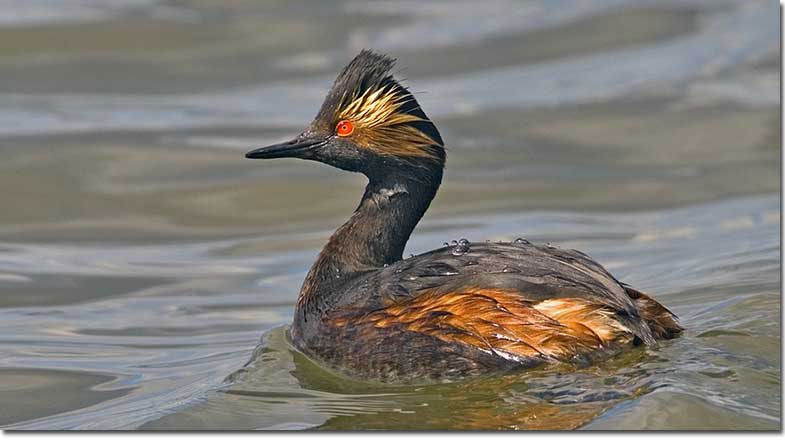
Eared Grebes are small waterbirds best known for their elegant and elaborate courtship dances. They are named after their stunning breeding plumage, which is black overall with chestnut flanks, red eyes, and tufts of golden feathers fanning out from behind their eyes, which resemble ears.
In 1912, Ernst Hartert renamed the species Black-necked Grebe in an attempt to align its common and scientific name. However, the name Eared Grebe is almost a century older than the new name and still widely used throughout North America.
Eastern Bluebird
Eastern Bluebirds are small, colorful songbirds named after their vibrant plumage. Their back and heads are striking blue, contrasted by warm rusty-orange throats and breasts and white bellies. However, females have less blue and muted colors compared to males.
If you want to meet one, head to eastern North America. Walk through open woodlands, farmlands, and orchards and listen for their rather low-pitched warbling song.
Eastern Kingbird
Eastern Kingbirds are large tyrant flycatchers native to North America, especially the eastern part. Their plumage is deceptively modest, yet elegant. They have dark gray uppersides and are white below. Although mostly concealed, they also have a yellow to orange to red crown stripe.
One might think that the crown stripe is what earned them the name Kingbird. However, a more likely source of inspiration is their aggressive and territorial behavior. They fiercely defend their nesting sites, flashing their crown and dive-bombing much larger creatures intruding the area, including crows, hawks, and squirrels.
Eastern Meadowlark
Eastern Meadowlarks are known for their beautiful flute-like songs, which they use to establish territories and attract mates during the breeding season. They primarily feed on insects, seeds, and occasionally small fruits, foraging on the ground in open grasslands and meadows across eastern North America.
Despite their name, they are not a part of the lark family Alaudidae. They belong to the blackbird family Icteridae instead.
Eastern Phoebe
Eastern Phoebes are small and plump insect-eating songbirds with a grayish-brown upper body and a pale underbelly. These birds are often seen perched on branches, fences, or other elevated spots, where they watch for flying insects. They’re known for their habit of wagging their tails frequently, which is a distinctive behavior seen in many flycatcher species. In spring, you can hear males sing their two-parted fee-bee song, hence the name.
Eastern Screech-Owl
Eastern Screech-Owls are small, nocturnal birds of prey with excellent camouflage that helps them blend against tree bark. They come in gray, rufous, and intermediate brown color morphs. These owls are cavity nesters, commonly found in a variety of wooded habitats across eastern North America, including forests and parks.
Their name comes from the call they emit when they are agitated and defending their offspring or nest. However, they also have other songs and calls, including trembling wails and soft purrs or trills.
Eastern Towhee
Eastern Towhees have a sparrow-like build and black-rufous-white or brown-rufous-white plumage depending on sex. They mostly forage on the ground, scratching up leaf litter with little backward hops in brushes and thickets across eastern North America. You may hear them call with a tow-hee call when alarmed, hence the name. In some regions, they are also known as the joree bird.
However, the Eastern Towhee wasn’t always considered its own species. Before 1995, they were considered conspecific with the very similar Spotted Towhee and were known as the Rufous-sided Towhee.
Eastern Whip-poor-will
Eastern Whip-poor-wills are nocturnal birds belonging to the nightjar family found in forests across eastern North America. They have cryptic plumage with mottled gray, brown, and black patterns that provide excellent camouflage against leaf litter and tree bark. Their large, wide mouths are adapted for catching flying insects, which they hunt primarily at dusk and dawn.
The second part of their name comes from their distinctive call, which sounds like whip-poor-will. They repeat it throughout the night, sometimes up to 400 times in a row without a break. According to some legends, the whip-poor-wills can sense souls leaving the body and may attempt to capture them.
Eastern Wood-Pewee
Eastern Wood-Pewees are small, insect-eating songbirds with olive-gray upperparts, pale underparts, and a slightly crested head. True to their name, they’re typically found in deciduous forests, wooded edges, and other wooded but fairly open areas throughout eastern North America. Due to their nondescript appearance, they are often located and identified due to their distinctive pee-a-wee song.
The Eastern Wood-Pewee is nearly identical to the Western Wood-Pewee, and they were formerly considered to be conspecific.
Elegant Tern
Elegant Terns are medium-sized seabirds with long, slender bodies and wings, giving them a graceful and streamlined appearance in flight. They have white underparts, pale gray upperparts, and a black shaggy crest. These terns are skilled fliers and divers, often plunging headfirst into the water to catch fish instead of hovering before the dive like other tern species.
Elf Owl
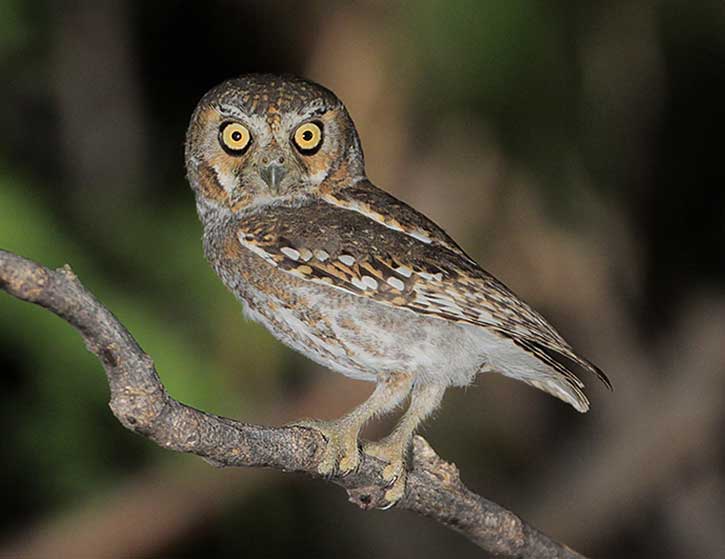
Elf Owls are tiny owls, measuring around 5 to 6 inches in length, making them one of the smallest owl species in the world, hence the name. Their plumage is predominantly grayish-brown, with intricate patterns of streaks and spots that provide excellent camouflage against tree bark.
Elf Owls are primarily insectivorous, feeding on a variety of insects, spiders, and other small invertebrates. However, they also catch small snakes, specifically threadsnakes, and bring them to their nest alive. The snakes then eat the parasites in the nest.
Emperor Goose
Emperor Geese are medium-sized waterfowl with regal plumage of silvery gray, black, and white. Their backs have a scaly look, and their chest and underside are intricately barred. Adults also have a white crown and the back of the neck, which resembles the ermine trim on a royal cloak, hence the name.
They are primarily herbivorous, feeding on a variety of aquatic vegetation, grasses, and sedges, which they graze on in coastal lagoons, tundra wetlands, mudflats, and rocky shores along the coast of Alaska. Some of their other names include the beach goose and the painted goose.
Eurasian Collared-Dove
Eurasian Collared-Doves are medium-sized doves with a sleek, streamlined body shape. They have pale grayish-buff plumage overall, with slightly darker wing feathers and a lighter underbelly. Their most prominent feature is the black half-collar marking on the nape of their necks, which resembles a “collar” and gives them their name.
As the name might suggest, Eurasian Collared-Doves are not native to the Americas but to Eurasia. They were introduced to the Americas in the 1980s and are now widespread and considered invasive. Another name for them is the Turkish Dove. The original range of the species covered Asia and ended in Turkey, from where it ended up dispersing to Europe as well.
Eurasian Tree Sparrow
Eurasian Tree Sparrows are small, stocky birds with rich chestnut crowns, cinnamon-and-black backs, pale bellies, and black markings on the throat and face. They’re social birds often seen in small flocks, foraging for food on the ground, in shrubs, or among branches in trees. These adaptable balls of energy can be found in various lightly wooded habitats, including woodlands, farmlands, urban areas, and parks. However, they prefer more rural areas as opposed to the House Sparrow and use tree cavities for nesting, hence the name.
As the name suggests, they are native to Eurasia but were introduced to North America in 1870 to enhance the native avifauna. To separate them from the native tree sparrow species, they are sometimes also called the German Sparrow.
Eurasian Wigeon
Eurasian Wigeons are medium-sized dabbling ducks with striking plumage. Males have a chestnut-colored head with a creamy yellow forehead, a pinkish breast, and gray flanks. Females are mottled brown overall, providing excellent camouflage in their wetland habitats. They are migratory birds, mainly ranging across Eurasia but they may fly to North America for the winter.
As for the term ‘wigeon’, then the origin of it is a bit uncertain. It presumably comes from Middle French vigeon which is derived from Old French vignier, meaning to whine or shout. This refers to the two-noted nasal whistling call the males give.
European Starling

European Starlings are medium-sized songbirds with glossy black plumage that shimmers with iridescence in the sunlight. They are adorned with white spots, giving them a spangled appearance, hence the name “starling.”
However, they are known as European Starlings only in North America. In Europe, they are just known as Common Starlings. They were introduced to North America in the 1870s-1890s and are now very widespread and considered invasive. All the individuals alive today are closely related, but so far that seems to have no negative effect on the population.
Evening Grosbeak
Evening Grosbeaks are large, stocky finches with striking and colorful plumage. Males show contrasting blacks, whites, and yellows whereas females are mostly gray with yellowish and black accents. They are most active in the evening, foraging for food or singing on higher perches.
Evening Grosbeaks are primarily seed-eaters, feeding on a variety of seeds, nuts, and fruits, which they crack open with their powerful bills. Smaller birds often follow them to snatch up food scraps that they leave behind. Despite their affinity to seeds, they also feed on insects, such as spruce budworms. These are considered serious pests and Evening Grosbeaks are often considered early indicators of an outbreak.
Bird Families Starting With E
Here are some of the bird groups that start with letter E you can meet in the Americas.
- Eiders – The Eider genus consists of three species of large sea ducks known for their thick downy feathers, often used to fill pillows and quilts, and striking plumage patterns.
- Emeralds – Emeralds is an informal name for the hummingbird tribe Trochilini. It consists of 114 species, all of which have emerald green in their plumage.
- Egrets – Egrets are elegant, long-legged wading birds.
- Eagles – Eagles are powerfully built majestic birds of prey known for their strong bills, keen eyesight, and soaring flight. They are not a natural group but refer to many species in the family Accipitridae.
- Elaenias – Elaenias are small, insect-eating songbirds found in forests and woodlands across the Americas.
- Euphonias – Euphonias are small finches known for their vibrant blue-and-yellow plumage (male) and melodious songs.
Up next: Birds that start with L – start with M – start with S – start with U
